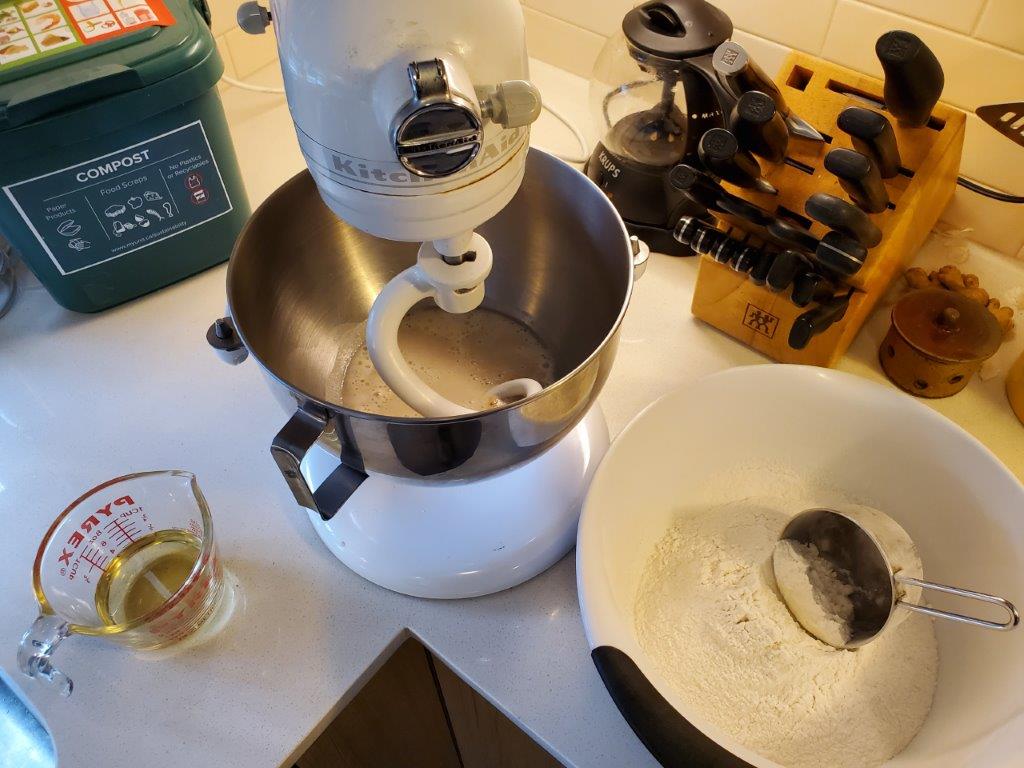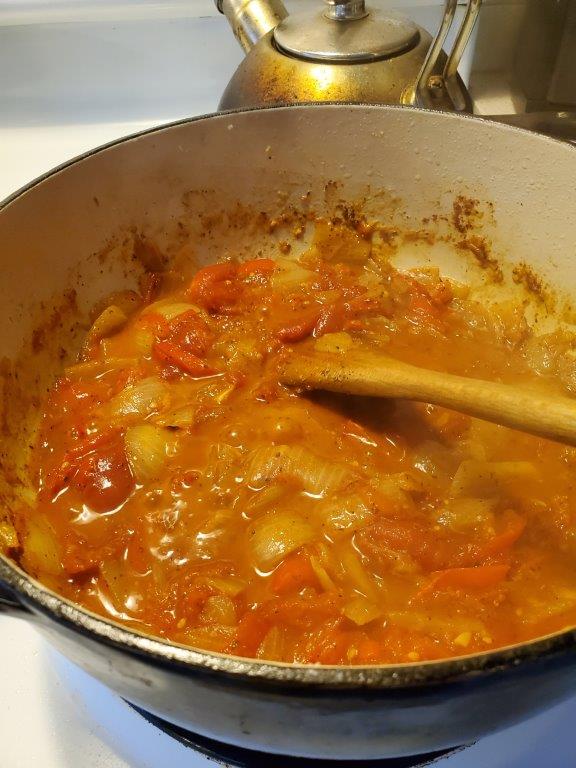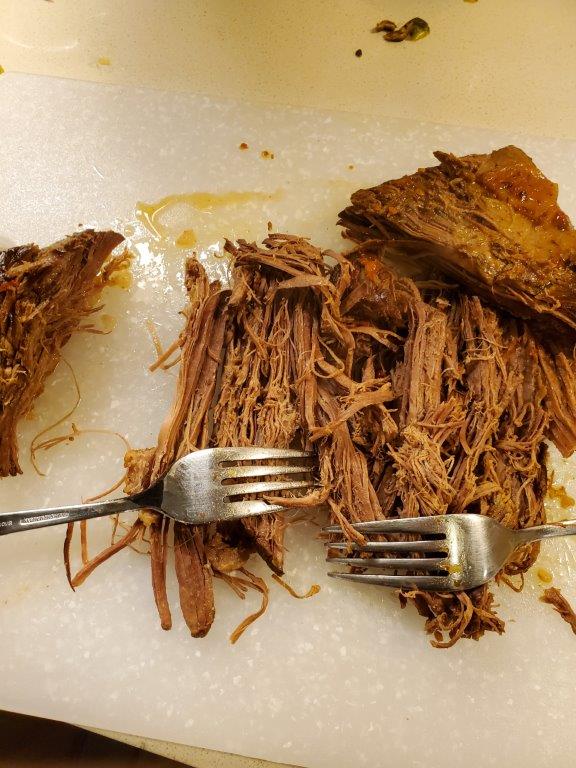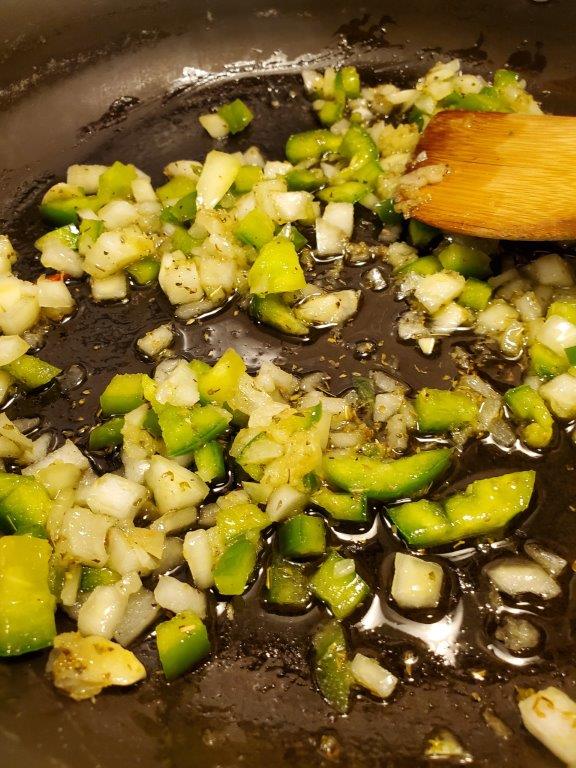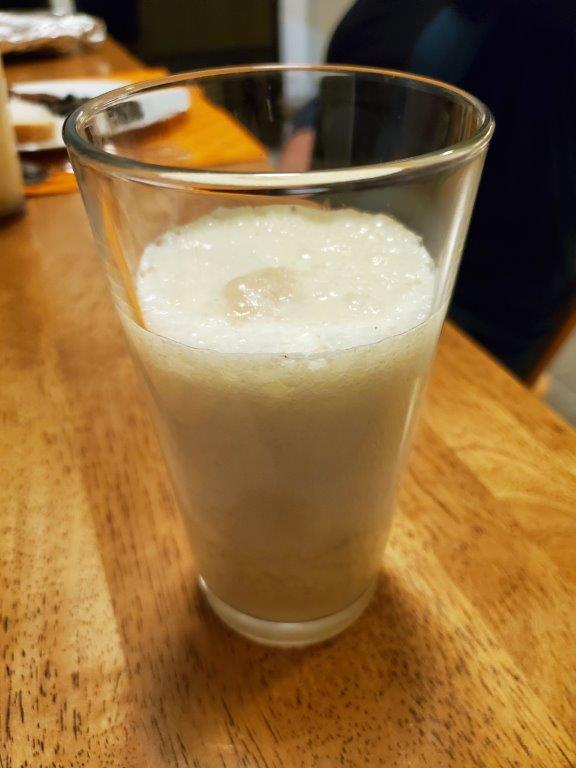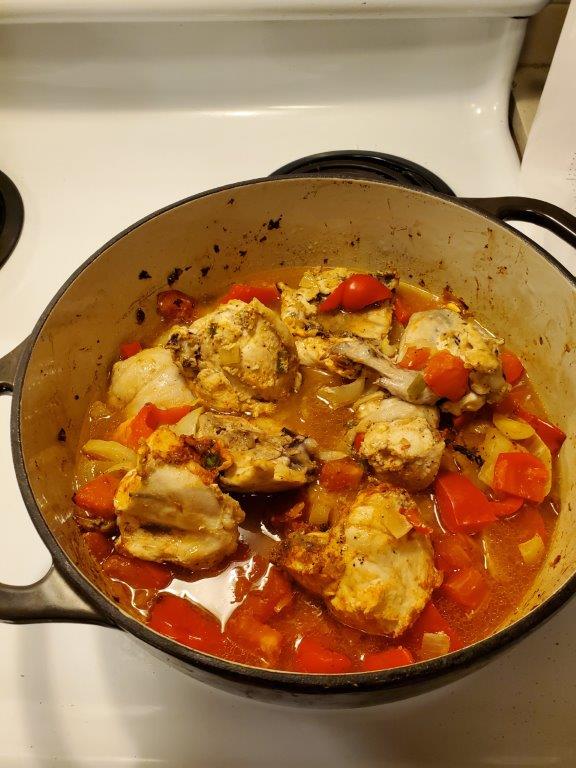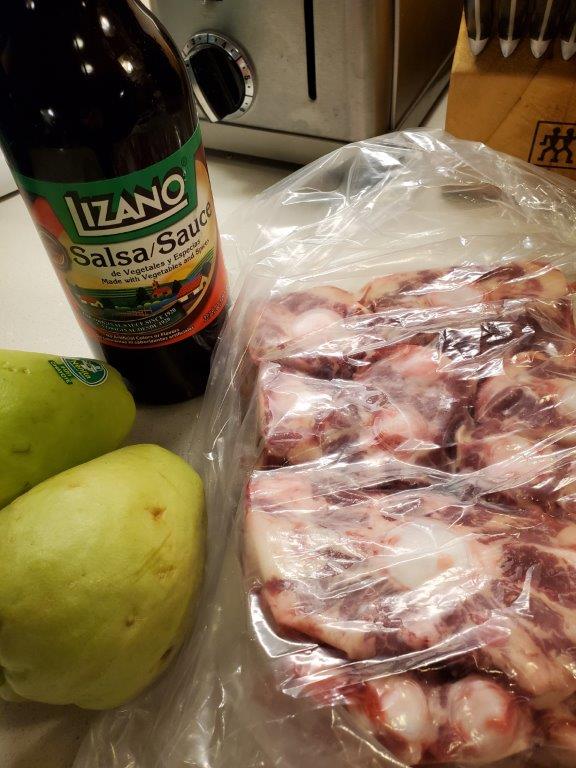We have something a little different this week, but very special. I’ve mentioned our good friend Walt earlier on this blog – he’s been our go-to expert for things Balkan, and even contacted a local mayor to help us find the best ingredients for our Bosnian meal. He’s a member of the musical ensemble “Harmonia,” which you should definitely listen to. Possibly even while reading the rest of this entry.
Walt’s family background is Croatian, and in particular, inland Croatian, away from the coastal regions. And as we were heading into the holiday season, he generously sent us a whole stack of his family’s holiday recipes, and offered tons of suggestions for shopping and preparing a Croatian holiday feast!
So welcome to the first Christmas edition of “Everything But A Mule.” (That title really makes less and less sense for what has turned from a vacation into a cooking blog…)
As always, let’s start by going shopping! While things like potatoes and onions can be had anywhere, we made a trip to “Jovo the Butcher” to procure an assortment of the smoked or pickled items that help make Balkan cuisine unique.

Clockwise from upper left: Pickled Cabbage Leaves, Lard, Sauerkraut, Salt Cod, Smoked Pork, Hungarian Paprika, Kulen Sausage, and a smoked ham hock. (center)
Christmas was on a Friday this year, but when I told Walt I had acquired the ingredients, he suggested making the cabbage rolls as soon as possible. “They’re really best if they’ve been reheated at least twice.” So Tuesday night, our Croatian meal got underway! However, as usual, we’re going to talk about the dishes in the order we ate them, rather than the order we prepared them.
At about the same time, we looked at the amount of food we intended to make, (lots) and the number of people available to consume said food, (two) and decided it was going to need to be TWO meals, one on Christmas Eve, and one on Christmas Day. This, of course, will scramble the chronological sequence even further. Fortunately, it doesn’t affect the actual quality of the food (excellent) or the writing (poor) much at all.
So what ARE we starting with? Well, according to Walt, it’s just not Christmas Eve in his family without a dish of “Bakalar”, or salt cod with potatoes. This is more or less the same word as “Bacala” in Italian, “Bacalao” in Spanish, etc. To start, the cod is soaked for three days to draw the salt out. Then you simmer the cod in one pan, and waxy potatoes in another one, until the one is flaky and the other is tender. (I’ll leave which is which as an exercise for the reader.)

It’s hard to see in this picture, but there IS water in the pan with the cod. Once the fish and potatoes are done, you slide the skins off the potatoes under cold running water. Not NEAR the cold water, idiot, UNDER the water. It’s there for a reason!
One lightly burned thumb later, the potatoes are chopped and tossed with the flaked fish in a bowl. However, there’s one more key ingredient here – garlic oil! You brown a few cloves of garlic in oil until it takes on all the lovely flavor, then pour the oil over the fish / potato mixture and let it marinate for an hour to soak up all the garlicky goodness!

The recipe didn’t actually specify any particular use for the fried garlic itself, so we spread it on bread with some kajmak, which you may remember as the heart attack in a jar from our Bosnian meal. It’s still delicious. (Although I have no idea what your average Croatian grandmother would think of this particular appetizer, waste not want not.)

Although Walt said that typically his family eats this dish by itself, we had some leftover sauerkraut left over from the cabbage rolls, so we served that alongside. Yes, we served leftovers from a dish we technically hadn’t actually eaten yet. I told you the chronology on this one got weird.

We also sliced up some smoked sausage, which the butcher assured us was Croatian style. It was quite spicy, and very good. The whole meal was absolutely delicious, and I can certainly see how a family tradition could develop around salt cod on Christmas Eve.
OK, you ask, but what about those cabbage rolls you’ve now teased twice?
Well, let’s talk about Christmas day! (Then we’ll go back and talk about the nut rolls we made on Christmas Eve. Take that, attempts to wrestle the post back to linear time!)
Our Christmas day feast was going to consist of the cabbage rolls we made on Tuesday evening, and a green bean soup. Since we’ve beaten that particular horse to death, let’s start with the cabbage rolls.
Stuffed cabbage is a dish with a lot of regional names and variants, but the Croatian name for this dish is “Sarma.” You start by making a filling from ground pork, rice, sautéed onions, garlic, salt and pepper, and lots of spicy Hungarian paprika. (Note – turns out this was supposed to be SWEET paprika. The amount of hot we used definitely made the dish a bit less authentic, but we sure liked it!) We were lucky enough to find some great smoked pork at the butcher, which is an optional but very desirable component to the filling.

Next you roll the filling in the cabbage leaves, and layer the stuffed leaves in the pot with sauerkraut, onions, and ham hocks.
Which is where we must pause for a moment. Several of these recipes call for smoked ham hocks. In the past, when I’ve purchased ham hocks for cooking, they have consisted of very thick (1″ or more) slices of bone in ham. When I asked for SMOKED ham hocks at Jovo, they told me “Sure! We have smoked ham hocks!”
By which they meant ENTIRE HOCKS. This is a BIG hunk o’ ham:

In the interest of getting something that would fit in the pot, I shaved off some slices and used those. As a result, we didn’t get any of the interesting marrow and/or tendon based flavors that you usually get from bone-in meat, but the ham itself was smoky and definitely came through in the final dishes.
Here’s our final pot of sarma, before we added the cooking liquid. I wish to apologize to Croatian grandmothers everywhere – this was the first time I tried making these, and they’re not terribly aesthetic.

The recipe calls for them to be covered by a weighted plate. We improvised by putting a normal plate on top, and then jamming a measuring cup between the heavy lid of the Dutch oven and plate to hold everything down. It seemed to work, and for the next three hours, the rolls happily bubbled away on low heat, and made our apartment smell heavenly. (Some people don’t like the smell of cooking pickled things. I feel sorry for those people.)
Once they were finished (remember, this is Tuesday night) they were popped into the fridge to cool. Except for the one that fell apart while cooking. We ate that one right away. For science.
Let’s hop forward again to Christmas day, and our other dish to accompany the cabbage rolls, Čušpajz od zelenog graha or Green Bean Soup. This one starts off by making a stock with some more of the ham hock and some quartered onions.

After that’s had an hour or so to reduce (longer would have been even better), we added our green beans, some more peeled waxy potatoes, and a whole bunch of dill.

While those cooked, it was time to make a roux. And this roux used as its fat an ingredient I’m actually sort of surprised we’ve never used for this project until now: lard.
The recipe doesn’t actually specify how MUCH roux to make, but we used about a third of a cup each of water and flour, and that seemed to work, so if you try this yourself (HIGHLY recommended), that seems a reasonable quantity.
If you have never made a roux before, the instructions are basically – “Combine fat and flour. Stir forever. DO NOT STOP STIRRING.”

This picture is the initial stir. It quickly became homogeneous in color, and VERY VERY SLOWLY got darker. We tried to split the difference between overcooking the vegetables and undercooking the roux, and got something that probably wasn’t QUITE dark enough, but nonetheless thickened and flavored the soup beautifully. The other major flavor that goes in at the end is vinegar, making for a sour, rich stew redolent with ham and dill.

Absolutely phenomenal. We reheated some for dinner, and it was still phenomenal then too. And the cabbage rolls were out of this world as well – they had a SUPER bite from the spicy paprika, and lots of smokiness from the smoked pork.
Finally, dessert! And by “finally”, I mean, “we made it the day before.” Yes, I know…
At any rate, we made nut rolls, which are a treat I’ve had many a holiday season at Walt’s place, so I knew approximately what I was shooting for here. We start by chopping walnuts. The recipe specifies a meat grinder, but absent one of those, the Cuisinart was pressed into service. The walnuts are then cooked with milk (evaporated and regular), sugar, and a touch of salt and almond extract to make the filling.

Next you make one of the most labor intensive doughs I’ve worked with to date. You start by scalding milk and adding eggs, shortening, salt, sugar, and yeast to make a starter. If you’re following the recipe at home, I recommend melting the shortening into the scalded milk FIRST, because it takes a long time to cool, and you can proof your yeast and start your nuts while that’s happening. (As opposed to standing around glaring at the thermometer, which was our approach.)

Once you’ve got the starter made, it goes into the bowl of a stand mixer, and you add in four and a half cups of flour… over the course of half an hour. Getting the consistency of this dough right takes patience. Once it’s mixed, you let it rise, then roll it out and spread filling all over it. Try to do a better job rolling it into an oval shape than I did.

Once the filling is smeared, you roll up your nut rolls and stick them in the oven.

These are the uncooked rolls. They poof up and brown beautifully in the oven, and then you have to wait an AGONIZING two and a half hours for them to cool before you can eat them. And agonizing it was, because these things are magical.
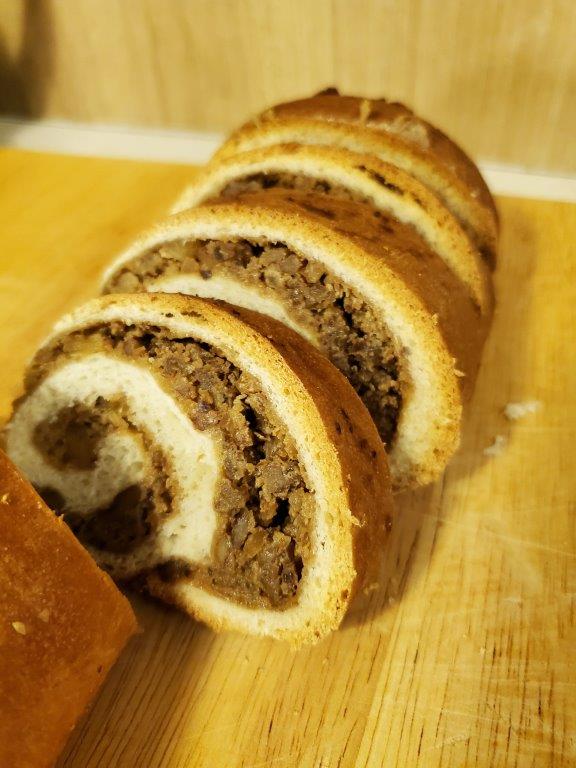
Obviously they’re supposed to be a little more even in thickness, but they still tasted just as delicious as I remembered.
And that’s our Croatian holiday meal! I can’t thank Walt enough for transcribing his family recipes and sending them to us, and I also can’t thank his family enough for handing down these traditions in the first place. He has generously allowed me to share the recipes in the links, and the recipe for the nut roll includes a description of their source, which I’ll quote here. (You should also read them even if you don’t plan to make the recipes – they include some wonderfully opinionated comments about, for example, parsley, and the express lack thereof, due to the fact that the author is not Italian.)
Next time we head back to the Caribbean for the first time in a while, and visit the island of Cuba!
Recipes:
“NOTES ON THE SOURCE: Annie Mahovlich DeNoble was born in Benwood, WV in 1926 to Emil and Ana Mahovlich. Her cooking and baking was in great demand her whole life. At every holiday she would make many of these nut rolls, sending them around the country as family members moved away. Although the formal name for the dish is “povitica” Aunt Annie, her siblings and parents always called it “gibanica”.”
(While these comments specifically relate to the nut rolls, all of these recipes are from Walt’s family.)
Sarma – Stuffed Cabbage – Croatian Style
Bakalar – Croatian Style for Christmas Eve
Croatian Green Bean Soup
Croatian Nut Roll
